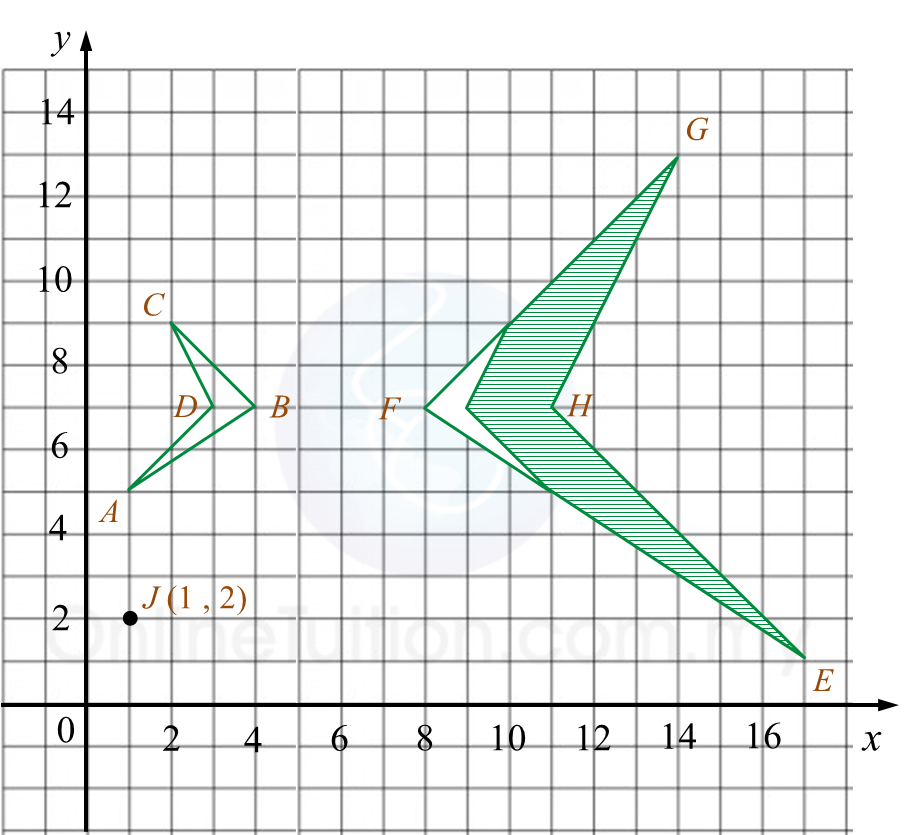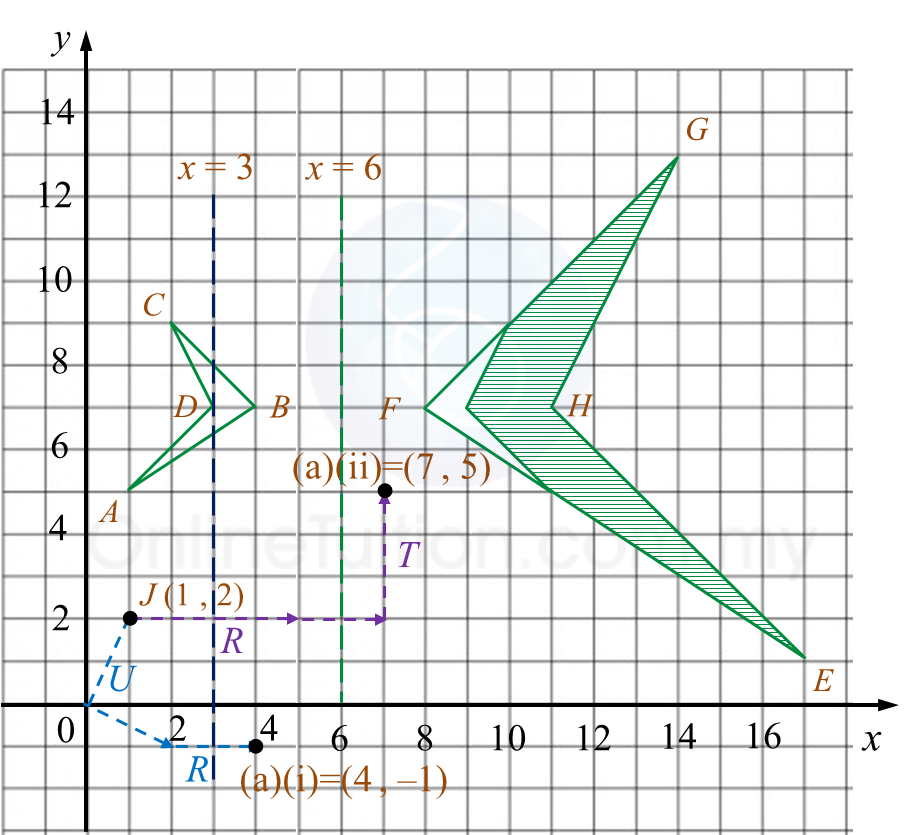Question 7:
Diagram shows the point J(1, 2) and quadrilaterals ABCD and EFGH, drawn on a Cartesian plane.

(a) Transformation U is a rotation of 90o, clockwise about the centre O.
Transformation T is a translation (23)
Transformation R is a reflection at the line x = 3.
State the coordinates of the image of point J under each of the following transformations:
(i) RU,
(ii) TR.
(b) EFGH is the image of ABCD under the combined transformation MN.
Describe in full, the transformation:
(i) N,
(ii) M.
(c) It is given that quadrilateral ABCD represents a region of area 18 m2.
Calculate the area, in m2, of the shaded region.
Solution:

(a)
(i) J (1, 2) → U → (2, –1 ) → R → (4, –1)
(ii) J (1, 2) → R → (5, 2) → T → (7, 5)
(b)(i)
N is a reflection in the line x = 6.
(b)(ii)
M is enlargement of scale factor 3 with centre (8, 7).
(c)
Area EFGH = (scale factor)2 x Area of object ABCD
= 32 x 18
= 162 m2
Therefore,
Area of shaded region
= Area of EFGH – Area of ABCD
= 162 – 18
= 144 m2
Diagram shows the point J(1, 2) and quadrilaterals ABCD and EFGH, drawn on a Cartesian plane.

(a) Transformation U is a rotation of 90o, clockwise about the centre O.
Transformation T is a translation (23)
Transformation R is a reflection at the line x = 3.
State the coordinates of the image of point J under each of the following transformations:
(i) RU,
(ii) TR.
(b) EFGH is the image of ABCD under the combined transformation MN.
Describe in full, the transformation:
(i) N,
(ii) M.
(c) It is given that quadrilateral ABCD represents a region of area 18 m2.
Calculate the area, in m2, of the shaded region.
Solution:

(a)
(i) J (1, 2) → U → (2, –1 ) → R → (4, –1)
(ii) J (1, 2) → R → (5, 2) → T → (7, 5)
(b)(i)
N is a reflection in the line x = 6.
(b)(ii)
M is enlargement of scale factor 3 with centre (8, 7).
(c)
Area EFGH = (scale factor)2 x Area of object ABCD
= 32 x 18
= 162 m2
Therefore,
Area of shaded region
= Area of EFGH – Area of ABCD
= 162 – 18
= 144 m2